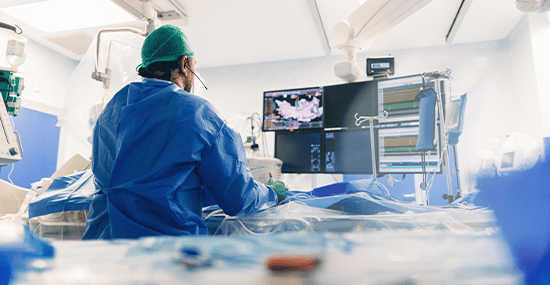



The University Hospital of Sharjah has a volley of experts specializing in Interventional Radiology (IR). IR comes with a range of techniques that rely on the use of radiological image guidance such as - X-ray fluoroscopy, ultrasound, computed tomography [CT] or magnetic resonance imaging [MRI]) etc. The departments caters to vascular and non-vascular procedures, venous interventions including varicose vein management, Neuro-interventional Procedures, Cross-sectional body imaging including Gastrointestinal and Radio- oncology and other Gynecology interventional procedures.
Vascular Procedures are treating diseases of Vascular system by surgical or non-surgical methods guided by imaging techniques. Many vascular problems can be treated with medication or exercise.
Swollen, blue, bulging, twisted, superficial veins (those closest to the skin) of the leg are known as varicose veins. High pressure inside the superficial veins of the leg causes varicose veins. Genetics are thought to play a large role in contributing to varicose veins.
Radio Oncology refers to diagnosis and treatment of various types of cancer and cancer-related problems using minimally invasive procedures. Interventional radiology procedures may reduce risk, pain and recovery time for patients.
Non-vascular Procedures encompasses a wide range of procedures which includes percutaneous needle biopsy, puncture, and drainage procedures and percutaneous removal of calculi—merit discussion.
Neurointerventional Procedures are minimally invasive image-guided procedures to treat disorders in the brain, head/neck, and spine.
Interventional radiologic techniques are also performed with injection of contrast material. In this instance, catheter insertion or needle placement is performed under fluoroscopic guidance, so that a particular vessel or organ can be seen and, in some instances, repaired via the catheter.
The Radiologist watches the movement of the barium through the esophagus, stomach, and the first part of the small intestine (duodenum) on a video screen. Several X-ray images are taken at different times and from different views.